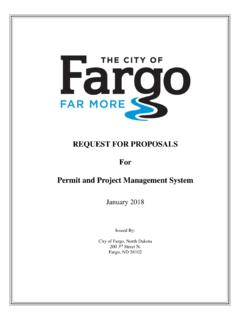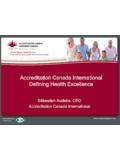Transcription of Protection from falling, collision and impact
1 2013 edition for use in England*K1 Stairs, ladders and rampsK2 Protection from falling K3 Vehicle barriers and loading bays K4 Protection against impact with glazing K5 Additional provisions for glazing in buildings other than dwellingsK6 Protection against impact from and trapping by doorsAPPROVED DOCUMENTKP rotection from falling, collision and impactThe building Regulations 2010 building Regulations 2010 APPROVED DOCUMENT K Protection from falling, collision and impactONLINE VERSIONONLINE VERSIONMain changes in the 2013 editionThis approved document supports Part K: Protection from falling, collision and impact . It takes effect on 6 April 2013 for use in England*. The 1998 edition (incorporating 2000 and 2010 amendments) will continue to apply to work started before 6 April 2013, or to work subject to a building notice, full plans application or initial notice submitted before 6 April 2013.
2 The main changes in this approved document are that: The document has been updated to amalgamate Approved Document N: Glazing safety in relation to impact , opening and cleaning, along with some overlapping guidance that resided in Approved Document M: Access to and use of buildings. References have been updated to standards as a requisite of the harmonised standard in relation to safe breaking and the testing methods. References have been updated to standards as a requisite of the harmonised standard and the National Annex in relation to the resistance of loads for barriers. Tables and diagrams have been amended and simplified. A new-style format is used, but there are no new technical requirements. Key terms have been updated and an index has been introduced.* This approved document gives guidance for compliance with the building Regulations for building work carried out in England.
3 It also applies to building work carried out on excepted energy buildings in Wales as defined in the Welsh Ministers (Transfer of Functions) (No. 2) Order VERSIONONLINE VERSIONB uilding Regulations 2010 Approved Document K, 2013 edition iThe approved documentsWhat is an approved document? The Secretary of State has approved a series of documents that give practical guidance about how to meet the requirements of the building Regulations 2010 for England. Approved documents give guidance on each of the technical parts of the regulations and on regulation 7 (see the back of this document). Approved documents set out what, in ordinary circumstances, may be accepted as reasonable provision for compliance with the relevant requirements of the building Regulations to which they refer. If you follow the guidance in an approved document, there will be a presumption of compliance with the requirements covered by the guidance.
4 However, compliance is not guaranteed; for example, normal guidance may not apply if the particular case is unusual in some way. Note that there may be other ways to comply with the requirements there is no obligation to adopt any particular solution contained in an approved document. If you prefer to meet a relevant requirement in some other way than described in an approved document, you should discuss this with the relevant building control body. In addition to guidance, some approved documents include provisions that must be followed exactly, as required by regulations or where methods of test or calculation have been prescribed by the Secretary of State. This approved document relates only to the particular requirements of the building Regulations that the document addresses. However, building work must also comply with any other applicable requirements of the building to use this approved document Each document uses the following Text against a green background is an extract from the building Regulations 2010 or the building (Approved Inspectors etc.)
5 Regulations 2010 (both as amended). These extracts set out the legal requirements of the regulations. b. Key terms, printed in green, are defined in Appendix When this approved document refers to a named standard or other document, the relevant version is listed in Appendix B (standards). However, if the issuing body has revised or updated the listed version of the standard or document, you may use the new version as guidance if it continues to address the relevant requirements of the building Regulations. NOTE: Standards and technical approvals may also address aspects of performance or matters that are not covered by the building Regulations, or they may recommend higher standards than required by the building VERSIONONLINE VERSIONONLINE VERSIONA pproved DocuONLINE VERSIONA pproved DocuApproved Docuii Approved Document K, 2013 edition building Regulations 2010 Where you can get further help If you do not understand the technical guidance or other information in this approved document or the additional detailed technical references to which it directs you, you can seek further help through a number of routes, some of which are listed The Planning Portal website: If you are the person undertaking the building work: either from your local authority building control service or from an approved inspector.
6 C. If you are registered with a competent person scheme: from the scheme If your query is highly technical: from a specialist or an industry technical body for the relevant VERSIONONLINE VERSIONONLINE VERSIONt K, 2013 editionONLINE VERSIONt K, 2013 editiont K, 2013 editionBuilding Regulations 2010 Approved Document K, 2013 edition iiiThe building Regulations The following is a high level summary of the building Regulations relevant to most types of building work. Where there is any doubt you should consult the full text of the regulations, available at work Regulation 3 of the building Regulations defines building work . building work includes:a. the erection or extension of a buildingb. the provision or extension of a controlled service or fittingc. the material alteration of a building or a controlled service or fitting. Regulation 4 states that building work should be carried out in such a way that, when work is complete:a.
7 For new buildings or work on a building that complied with the applicable requirements of the building Regulations: the building complies with the applicable requirements of the building Regulationsb. for work on an existing building that did not comply with the applicable requirements of the building Regulations:(i) the work itself must comply with the applicable requirements of the building Regulations(ii) the building must be no more unsatisfactory in relation to the requirements than before the work was carried change of use Regulation 5 defines a material change of use in which a building or part of a building that was previously used for one purpose will be used for another. The building Regulations set out requirements that must be met before a building can be used for a new purpose. To meet the requirements, the building may need to be upgraded in some and workmanship In accordance with regulation 7, building work must be carried out in a workmanlike manner using adequate and proper materials.
8 Guidance on materials and workmanship is given in Approved Document efficiency requirements Part 6 of the building Regulations imposes additional specific requirements for energy efficiency. If a building is extended or renovated, the energy efficiency of the existing building or part of it may need to be VERSIONONLINE VERSIONONLINE VERSIONA pproved DocuONLINE VERSIONA pproved DocuApproved Docuiv Approved Document K, 2013 edition building Regulations 2010 Notification of work Most building work and material changes of use must be notified to a building control body unless one of the following It is work that will be self-certified by a registered competent person or certified by a registered third It is work exempted from the need to notify by regulation 12(6A) of, or Schedule 4 to, the building for compliance People who are responsible for building work ( agent, designer, builder or installer) must ensure that the work complies with all applicable requirements of the building Regulations.
9 The building owner may also be responsible for ensuring that work complies with the building Regulations. If building work does not comply with the building Regulations, the building owner may be served with an enforcement VERSIONONLINE VERSIONONLINE VERSIONt K, 2013 editionONLINE VERSIONt K, 2013 editiont K, 2013 editionBuilding Regulations 2010 Approved Document K, 2013 edition vContents The approved documents Page iThe building Regulations iiiApproved Document K: Protection from falling, collision and impact 1 Summary 1 Application 1 Interaction with other legislation 1 Requirement K1: Stairs, ladders and ramps 3 Performance 3 Section 1: Stairs and ladders 4 Scope 4 Steepness of stairs rise and going 4 Stepped gangways in assembly buildings 5 Construction of steps 6 Headroom for stairs 7 Width of flights of stairs 8 Length of flights of stairs 9 Landings for stairs 10 Special stairs 11 Handrails for stairs 14 Guarding of stairs 16 Access for maintenance 17 Section 2.
10 Ramps 18 Scope 18 Appearance of ramps 18 Steepness of ramps 18 Construction of ramps 19 Design of ramps 19 Width of ramps 20 Obstruction of ramps 20 ONLINE VERSIONONLINE VERSIONONLINE VERSIONA pproved DocuONLINE VERSIONA pproved DocuApproved Docuvi Approved Document K, 2013 edition building Regulations 2010 Handrails for ramps 20 Landings for ramps 20 Guarding of ramps 21 Requirement K2: Protection from falling 22 Performance 22 Section 3: Protection from falling 23 Siting of pedestrian guarding 23 Design of guarding 23 Guarding of areas used for maintenance 25 Requirement K3: Vehicle barriers and loading bays 26 Performance 26 Section 4: Vehicle barriers and loading bays 27 Vehicle barriers 27 Loading bays 28 Guarding for loading bays 28 Requirement K4: Protection against impact with glazing 30 Performance 30 Section 5: Protection against impact with glazing 31 Glazing in critical locations 31 Safe breakage 32 Robustness 32 Glazing in small panes 33 Permanent screen Protection 34 Requirement : Protection from collision with open windows etc.
















